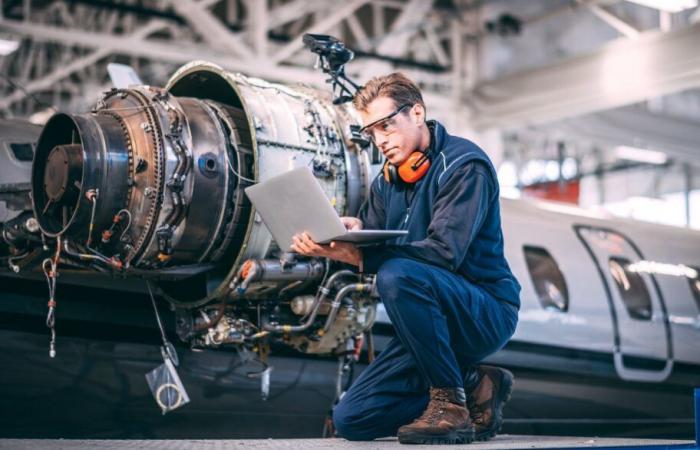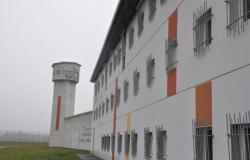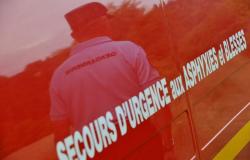In aviation, how can predictive maintenance models extend the lifespan of equipment and reduce the environmental impact of frequent replacements?
This question served as the basis for the research project of a team made up of three university students and a college student as part of the innovation challenge studying sustainable aviation. The four young researchers grouped under the name of Sustain Aero predict were Antoine Jean, registered in the baccalaureate in computer science and teaching assistant of 1is Cycle at Laval University, Heitor Costa and Marie Sille, by Polytechnique Montréal, and Alexandre Jean, from Cégep de Rivière-du-Loup.
As part of this competition set up by Bombardier, Tata Consultancy Services and Technnation Canada, the participants had to offer solutions fueled by artificial intelligence (AI) which would help shape a lasting future for the aviation industry.
On the sidelines of the final of the innovation challenge studying sustainable aviation. From left to right: Paul Michaud, Vice-President, Information Systems Human Resources and Sustainable Development at Bombardier, Heitor Costa, Antoine Jean and Marie Sille. Was absent Alexandre Jean.
— Kathleen Girard
An original solution
On March 20, at the Laurent Beaudoin finishing center in Bombardier, Dorval, the Sustain Aero Predict team received the second award for the competition for the originality of its solution.
“It should be understood that currently a large part of the maintenance on an aircraft is done regularly,” explains Antoine Jean. We will thus replace this or that room after so much or so many years. We don’t really do maintenance based on the data. ”
The student and the students conceptualized an optimized interface offered to customers and fleet managers responsible for planning maintenance on Bombardier’s business aircraft.
“At Bombardier,” he said, “experienced operators are currently using an interface to find where the problems are in the device. Our idea consisted in increasing this system using the plane data to predict whether there will be problems with certain components of the plane and offer actions suggestions over these potential problems. ”
In this concrete project, the Sustain Aero Predict team did not have access to very precise data of the parts or the algorithms behind the current performance indication system at Bombardier. “Without access to data from the devices themselves, we focused on the user experience and the autonomy that could be offered for the maintenance of his plane,” continues the student. The user will say to himself: do I make an inspection or rather, do I keep the same predictive maintenance schedule? The way we organized the interface, whose data we displayed, we wanted to make it easy to understand by the user. ”
According to Antoine Jean, the application clearly meets a possible need. “This is an opportunity to seize,” he says. Maintenance at regular intervals works well, it has its advantages, and it is particularly optimized for safety. But with artificial intelligence, which is getting better and better, and also the fact that we are able to harvest much more data than before, there is probably an opportunity, in aviation, to make more “intelligent” data -based decisions, without sacrificing security. In other words, to move from preventive maintenance to predictive maintenance and thus, to reduce unnecessary interventions. Our project makes it possible to offer an overview of what can be drawn from the use of AI. In my opinion, it is in this direction that the aviation industry leaves. ”








